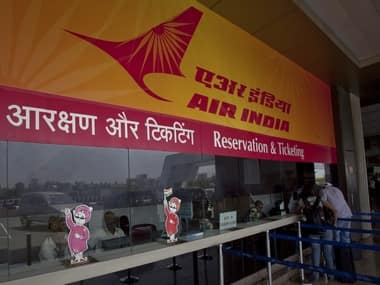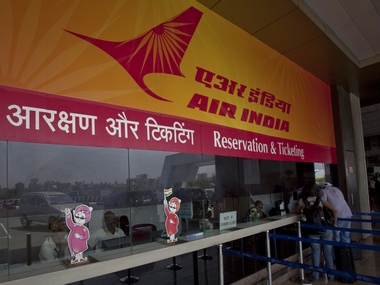New Delhi: Air India is once again trying to take wing. The loss-laden national carrier, which doesn’t even have enough money to pay salaries to its employees, has plans to increase total departures in the summer schedule (which begins from 31 March) to 405 per day against 380 in the ongoing winter schedule. It plans to introduce new flights to some lucrative destinations in the Middle East while withdrawing some.
Also, Air India has quietly begun “low-cost” operations on some domestic routes. Even as Kingfisher is stuck in the mud, Air India is scripting a revival.
[caption id=“attachment_239828” align=“alignleft” width=“380” caption=“AI’s restructuring of flight schedules revolve around Dammam in Saudi Arabia.”]
 [/caption]
[/caption]
The schedule restructuring by Air India comes even as a final decision on how many Dreamliners (Boeing 787s) it will buy is awaiting a decision from the Union Cabinet. The Dreamliner purchase has been mired in controversy since it was part of a decision on aircraft purchase by erstwhile Civil Aviation Minister Praful Patel - which has been questioned by the Comptroller and Auditor General.
A Cabinet Note being circulated by the aviation ministry early next week supports the purchase of all 27 Dreamliners, against an earlier advise to buy only 14 of them. Dreamliners are crucial to the airline’s turnaround since they are seen as ideal aircraft for medium-haul international routes.
Air India’s restructuring of flight schedules revolve around Dammam in Saudi Arabia. Given the uncertainty over how many Dreamliners will be bought and when deliveries will begin, the airline seems to have drawn up a schedule for the summer which may help it generate better revenues even with the existing fleet.
The airline is focused on Dammam, which has a huge Indian population working in numerous oil fields and ancillary industries there.
Aviation expert Devesh Aggarwal says some flights will be added but many withdrawn from Dammam. “Dammam-Delhi will be served daily with an A319, replacing the current twice-weekly service with Boeing 777-300ER. However, more than half of Air India’s remaining Dammam flights will all be cancelled, including Mumbai-Dammam.”
Impact Shorts
More Shorts“Air India has had direct flights between Mumbai and Dammam since the 1960s and the ending of this route is indicative of Air India’s continual shift towards a Delhi-centric airline….Along with the thrice-weekly A320 service from Mumbai, the current four-weekly Hyderabad-Dammam A320 services will also be cancelled. The daily tag on Sharjah-Dammam (linked to Varanasi and Lucknow flights) will go as well.”
Air India officials did not divulge which international flights would be withdrawn, merely saying that the new introductions on some international routes and the launch of low-cost operations on some domestic routes will help the airline generate better revenues.
From April this year, Air India will start operating for the first time a daily flight between Visakhapatnam and Dubai via Hyderabad. It will also begin a Delhi-Bahrain daily flight, which will be routed via Abu Dhabi.
Then, the frequency of the Delhi-Tokyo flight will be increased to five times a week from four times at present. And the Delhi-Dammam twice-weekly flight will now become a daily one.
On the domestic front, Air India has begun converting older A320 planes to a single-class configuration (all economy class seats) from their two-class configuration at present. The first single-class, low-cost flight has already begun last month with 168 economy seats. Airline officials said they will be putting back the Hyderabad-Kolkata daily flight, which was discontinued two years ago on after a fuel price spike.
Ironically, Air India is the only full-service carrier on a route which is otherwise serviced by low-cost carriers (LCCs). This route will eventually be converted into a low-cost one as more A320s get reconfigured.
A second Mumbai-Kochi flight is also being introduced at convenient timings to generate good passenger load factors. Air India officials say by the judicious introduction of new flights, rejigging flight timings and by entering the low-cost segment, the airline’s overall aircraft utilisation has gone up.
Aircraft utilisation measures the number of hours each aircraft in the Air India fleet is being used in a day. Now, wide-bodied (long range) aircraft such as B 777s are being used for 14 hours a day whereas the narrow bodied ones are used for almost 11 hours a day.
)